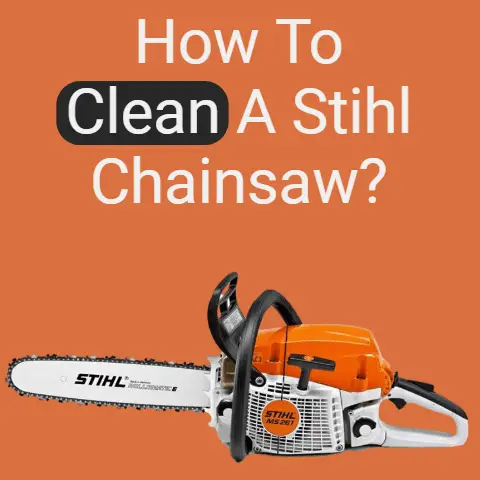How Much Play in Chainsaw Chain (3 Signs It’s Too Loose)
How Much Play in Chainsaw Chain: 3 Signs It’s Too Loose (Explained)
Choosing a chainsaw isn’t just about the horsepower or brand.
It’s about understanding every component and ensuring it runs smoothly.
One of the most overlooked aspects is chain tension.
Let’s explore this in depth, and I’ll share some of my experiences along the way.
My First Encounter with a Loose Chain
I was a novice in the field, excited to tackle my first big project: felling a large tree in my backyard.
I had done my research, picked what I thought was the perfect chainsaw, and was ready to go.
But as I revved up the saw, I noticed something peculiar—the chain seemed to sag slightly.
It was my first brush with a loose chain, and little did I know how critical it was to address it immediately.
Signs Your Chainsaw Chain is Too Loose
1. The Sag Test
The sag test is your first line of detection.
When you look at your chainsaw, the chain should sit snugly around the guide bar.
But if it droops below the bar’s edge, that’s a clear indicator of looseness.
I remember one time when I ignored this sign, thinking it was no big deal—until the chain slipped off mid-cut.
Lesson learned.
2. Difficulty in Cutting
A chainsaw should glide through wood like butter.
If you find yourself pushing hard or the saw bouncing back, it could be due to a loose chain.
I once attempted to cut through a thick log, and no matter how much force I applied, it felt like I was battling the saw itself.
Tightening the chain made all the difference.
3. Unusual Noises
Chainsaws are inherently noisy, but they shouldn’t make strange sounds like rattling or clanking.
These noises can indicate that the chain isn’t aligned properly, often due to being too loose.
Imagine being in a serene forest setting only to be disrupted by a clang every time you pull the trigger—trust me, it’s unsettling.
Why Chain Tension Matters
Now, why is maintaining optimal chain tension so crucial?
Here’s how it affects your chainsaw’s performance:
- Increased Risk of Accidents: A loose chain can jump off the guide bar during operation, posing serious safety hazards.
- Reduced Efficiency: A loose chain fails to grip the wood effectively, requiring more time and effort to complete cuts.
- Excessive Wear and Tear: Both the chain and guide bar suffer undue stress, leading to premature wear.
Equipment Requirements
Before diving into adjustment procedures, gather these essentials:
- Tools Needed:
- Screwdriver or wrench (typically included with your chainsaw)
- Protective gloves
- Safety goggles
- Chainsaw oil for lubrication
Prerequisite Knowledge
To adjust your chainsaw chain effectively, it’s important to understand its basic components:
- Guide Bar: The metal bar that directs the chain.
- Chain Tensioner: The mechanism responsible for adjusting chain tension.
- Drive Links: The parts of the chain that engage with the guide bar.
Detailed Steps for Checking and Adjusting Chainsaw Chain Tension
Step 1: Prepare Your Chainsaw
- Ensure Safety First: Always turn off your chainsaw and allow it to cool before handling.
- Wear Protective Gear: Gloves and safety goggles are non-negotiable.
Step 2: Inspect the Chain
- Perform the Lift Test: Gently lift the chain away from the guide bar at its midpoint.
Ideally, you should see a small gap—not too wide or too tight.
Step 3: Adjust the Tension
- Locate the Tensioner: Find the tensioning screws near the base of your guide bar.
- Loosen Guide Bar Nuts: Use a wrench to loosen these nuts slightly, allowing for adjustment.
- Adjust Tensioner Screw: Turn clockwise to tighten or counterclockwise to loosen.
- Secure Nuts Back: Once adjusted, re-tighten the nuts to secure the guide bar firmly.
Safety Precautions
Warning: Never adjust a chainsaw chain while it’s running. Always ensure your chainsaw is off and cool before making adjustments.
Tips for Maintaining Chain Tension
Maintaining proper tension is key to your chainsaw’s performance and longevity:
- Regular Checks: Get into the habit of checking tension before each use.
- Consistent Lubrication: Keep your chain well-oiled to minimize friction and wear.
- Consider Replacements: If your chain consistently comes loose, it may be time for a replacement.
Troubleshooting Common Issues
Chain Keeps Coming Loose:
- Inspect the tensioning mechanism for wear or damage.
- Check for any physical damage to the guide bar.
Chain Won’t Stay Sharp:
- Ensure proper sharpening techniques are employed.
- Verify that you’re using an appropriate chain for your specific saw model.
Personal Insights on Chain Maintenance
Over the years, I’ve learned that taking small preventative steps can save you from major headaches later on.
For instance, after every few uses, I make it a point to thoroughly clean my chainsaw, removing any debris that might affect performance.
A clogged guide bar can impede proper tensioning and lead to uneven cuts.
One memorable experience was during a winter storm cleanup when I relied heavily on my chainsaw.
After hours of cutting through fallen branches, I noticed my saw wasn’t performing as efficiently as before.
A quick inspection revealed that snow and ice had compacted around the drive links, affecting tension.
After clearing it out and re-tensioning the chain, my saw was back in action.
In-Depth Look at Chain Types
Understanding different types of chains can also impact how you manage tension:
- Full-Chisel Chains: Known for fast cutting but require frequent sharpening.
- Semi-Chisel Chains: Offer durability but cut slower than full-chisel.
- Low Profile Chains: Ideal for smaller saws and known for reduced kickback risks.
Each type has unique tensioning needs based on its design and application.
Advanced Techniques for Optimal Chain Performance
Sharpening Your Chain
A sharp chain not only cuts faster but also maintains proper tension more effectively:
- Use a File Guide: Ensures consistent sharpening angles.
- Check Depth Gauges: Maintain them slightly below cutter height for optimal performance.
Regular Guide Bar Inspection
A warped or damaged guide bar can affect chain tension:
- Inspect for Wear Marks: Uneven wear indicates improper tensioning or alignment.
- Flip Guide Bar Regularly: Promotes even wear and extends lifespan.
Conclusion
Maintaining proper chain tension is more than just an operational concern; it’s a safety imperative.
By regularly inspecting and adjusting your chainsaw’s tension, you not only enhance its efficiency but also ensure safer usage.
FAQ Section
Q: How often should I check my chainsaw chain tension?
A: I recommend checking it before each use and during extended operations.
Q: What if my chain keeps getting loose despite adjustments?
A: It might be time to inspect for wear or consult a professional technician.
Q: Can I adjust the chain tension without tools?
A: While some models feature tool-less tensioning systems, most require basic tools like a wrench or screwdriver.
By keeping these tips in mind and regularly maintaining your equipment, you’ll ensure your chainsaw remains a reliable tool for all your cutting needs.
Stay safe and happy cutting!






